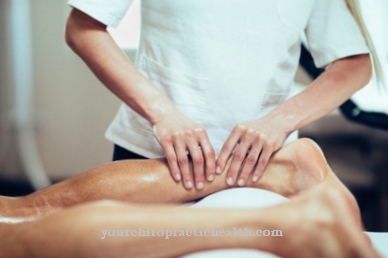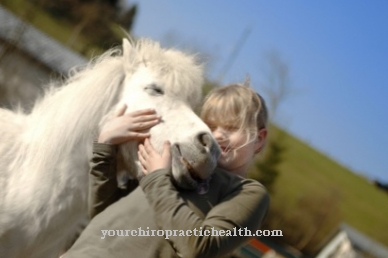In the Vojta therapy is a physiotherapy treatment method that was developed by neurologist Václav Vojta in the 1960s. It aims to give people with diseases or injuries in the area of the central nervous system back their freedom of movement to the greatest possible extent.
What is Vojta Therapy?

The therapy is used for disorders of the postural and musculoskeletal system. This also applies to diseases or movement restrictions that originate from the nervous system. This damage severely restricts or can block the innate movement patterns such as grasping, turning, walking and standing.
The goal of Vojta Therapy is to reactivate these movement patterns in people with disabilities of various kinds. The extent to which this is possible depends on the underlying disease or disability itself. In order to achieve the best possible effect, the therapy method works with so-called reflex locomotion. Reflex is defined as an unconscious and uncontrolled reaction to a certain stimulus, with locomotion standing for locomotion. The reflex locomotion is therefore a movement forced by reflexes.
Function, effect & goals
Vojta therapy can be used for numerous diseases. It is considered a basic therapy for almost every movement disorder. For a long time, the therapy was considered ineffective in adults and only successful in small children. The reason for this lay in the malleability of the central nervous system in children, which is clearly reduced in adults. These assumptions turned out to be wrong. Although the easier malleability increases the chance of success, this method is also used again and again in adults.
The only requirement for Vojta therapy is a neuromuscular connection between the muscles and nerve tracts. As long as this line is available, the therapy can be used. One area of application is, for example, multiple sclerosis. Here the neurological potential is exhausted.
There are many different indicators for therapy. It can be used when movement disorders occur due to brain damage or with various muscle diseases. In addition, successes can be achieved with different types of paralysis. This includes paralysis in the arms and legs, but also paraplegia, provided the above condition is met. The therapy is also used for coordination disorders in infancy. These can be traced back to various genetic diseases, for example.
In addition, Vojta therapy is used for people with limitations in the area of the spine. This includes, for example, scoliosis, a curvature of the spine. There are also neurological diseases that have already been picked up, such as multiple sclerosis, ischalgia and herniated discs. In addition, it is also a drug of choice, which is used after a stroke to show those affected a way back into life. The therapy can help to restore natural movement patterns as far as possible and thus make life easier again.
Depending on the type, Vojta therapy can also be used for congenital deformities and the associated incorrect loads. In addition, such incorrect loads can also be triggered by accidents and injuries as well as the pain they cause.
In contrast, the therapy should not be used if there are acute and inflammatory diseases. It is not geared towards or specialized in this. The same applies to its use by people with glass bones, since reflex locomotion can lead to severe damage here. In addition, Vojta therapy should be avoided for some heart and muscle diseases.Appropriate agreements must be made individually with the doctor and physiotherapist to be treated.
The therapy works with the triggering of stimuli by the therapist. These are activated from different basic positions. A variant is activation when the patient is in a lying position. The irritation leads to corresponding movement complexes, reflex crawling or reflex turning. Movements are achieved that most patients may not have been able to do before. By combining and varying different stimuli and movements, a therapy program tailored to the person concerned can be achieved.
The therapy must be adapted to the disease and its course as well as the individual needs of the patient. A suitable therapy program is developed together with the therapist.
You can find your medication here
➔ Medicines for back painRisks, side effects & dangers
Critics of Vojta Therapy primarily target the use of the methods on infants. They are supported by the mothers of affected children. The reason for this is the crying of the infants during the therapy session, which leads to psychological stress in the mother.
It is forced to suppress the need for protection. There is also the fear of subconsciously causing psychological damage to the children. The children could resent the parents' treatment. The basis for this is the infants' lack of understanding of forced movement. Children may perceive the therapy as abuse, which has a negative effect on mental development. The enormous stress to which parents and especially mothers are exposed during therapy is not to be despised.
Experience reports tell of incessant screaming from the children. Often pediatricians and therapists speak of possible scenarios that the family can face if treatment is not continued. However, it makes sense to first listen to different paediatricians and think about alternatives before parents decide on Vojta therapy. In some cases, there are other treatment options that are less stressful and that put the children under less pressure. For this reason, Vojta therapy should only be used in infants if it is felt to be absolutely necessary by several sides.












.jpg)



.jpg)










.jpg)
